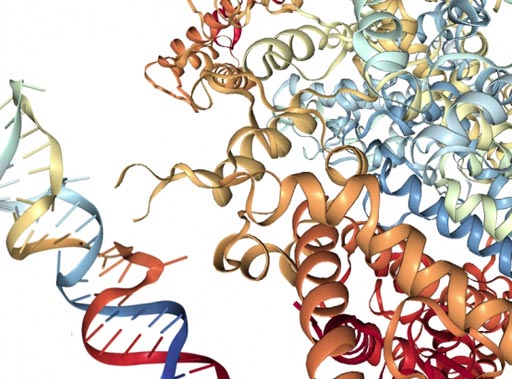CRISPR Tool Enables Genome Repair by Precise RNA Editing
By LabMedica International staff writers
Posted on 06 Nov 2017
The CRISPR/Cas9 gene-editing tool has been modified to act as a promising RNA editing platform with broad applicability for research, therapeutics, and biotechnology.Posted on 06 Nov 2017
CRISPR/Cas9 is regarded as the cutting edge of molecular biology technology. CRISPRs (clustered regularly interspaced short palindromic repeats) are segments of prokaryotic DNA containing short repetitions of base sequences. Each repetition is followed by short segments of "spacer DNA" from previous exposures to a bacterial virus or plasmid. Since 2013, the CRISPR/Cas system has been used in research for gene editing (adding, disrupting, or changing the sequence of specific genes) and gene regulation. By delivering the Cas9 enzyme and appropriate guide RNAs into a cell, the organism's genome can be cut at any desired location. The conventional CRISPR/Cas9 system is composed of two parts: the Cas9 enzyme, which cleaves the DNA molecule and specific RNA guides that shepherd the Cas9 protein to the target gene on a DNA strand.

Image: A Cas13a molecule pictured with an RNA molecule (Photo courtesy of Lauren Solomon, Broad Communications).
Investigators at the Broad Institute (Cambridge, MA, USA) and the Massachusetts Institute of Technology (Cambridge, USA) showed that a different CRISPR complex, CRISPR/Cas13a could be engineered for mammalian cell RNA knockdown and binding. To do this, the investigators engineered a Cas13 ortholog capable of robust knockdown and demonstrated RNA editing by using catalytically inactive Cas13 (dCas13) to direct adenosine to inosine deaminase activity via the enzyme ADAR2 to transcripts in mammalian cells.
Double-stranded RNA-specific adenosine deaminase is an enzyme that in humans is encoded by the ADAR (adenosine deaminase acting on RNA) gene. Adenosine deaminases acting on RNA (ADAR) are enzymes responsible for binding to double stranded RNA (dsRNA) and converting adenosine (A) to inosine (I) by deamination. As (I) is structurally similar to guanine (G), this induces (I) to (C) [cytosine] binding. The conversion from (A) to (I) disrupts the normal A:U pairing, which makes the RNA unstable. In both translation and replication (I) functions in a fashion similar to (G) in the RNA molecule.
Use of CRISPR\Cas13a enabled the investigators to develop a system, which they referred to as RNA Editing for Programmable A to I Replacement (REPAIR). This system, which had no strict sequence constraints, could be used to edit full-length transcripts containing pathogenic mutations. To demonstrate REPAIR's therapeutic potential, the investigators synthesized the pathogenic mutations that cause Fanconi anemia and X-linked nephrogenic diabetes insipidus, introduced them into human cells, and successfully corrected these mutations at the RNA level.
"The ability to correct disease-causing mutations is one of the primary goals of genome editing," said senior author Dr. Feng Zhang, professor of neuroscience at the Massachusetts Institute of Technology. "So far, we have gotten very good at inactivating genes, but actually recovering lost protein function is much more challenging. This new ability to edit RNA opens up more potential opportunities to recover that function and treat many diseases, in almost any kind of cell."
The CRISPR/Cas13-based REPAIR system was described in the October 25, 2017, online edition of the journal Science and the October 4, 2017, online edition of the journal Nature. The technology has been made freely available to researchers via the Zhang laboratory's page on the plasmid-sharing website Addgene.
Related Links:
Broad Institute
Massachusetts Institute of Technology
Addgene







 assay.jpg)





